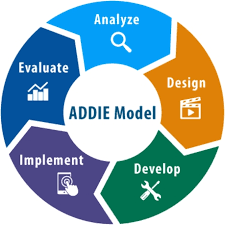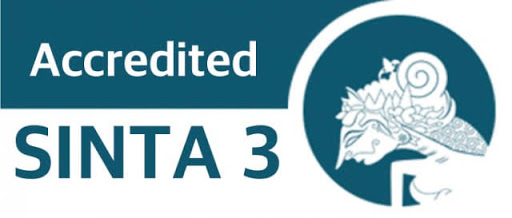Developing junior high school students’ worksheet to foster mathematics communication ability
DOI:
https://doi.org/10.12928/ijei.v3i1.6263Keywords:
communication skills, mathematics, students’ worksheetAbstract
This study aims to develop student worksheets based on mathematical communication skills. It used the ADDIE model (Analysis, Design, Development, Implementation, Evaluation) to develop and evaluate the worksheet. The subjects of this study were students of class VII in one of the junior high schools in Yogyakarta. The testing consisted of two stages, namely the small-scale trial consisting of 5 students and a large-scale trial consisting of 31 students. We collected the data using questionnaire for material and media experts’ judgment as well as for the students’ responses. Then, we analyzed the validity and practicality of the worksheet. Finally, the results of the assessment of material experts and media experts obtained an overall average score of 4.29 (very good category), so that the mathematical communication skills worksheet considered valid. Meanwhile, the students' responses to the worksheets were practical with an average score of 3.1 (good category).
References
Arofah, L., & Nawantara, R. D. (2019). Pentingnya critical thinking bagi siswa dalam menghadapi Society 5.0. In Prosiding SEMDIKJAR (Seminar Nasional Pendidikan dan Pembelajaran, 3, 538-545.
Fara, U., Noer, S. H., & Rasidin, U. (2019). Pengembangan LKPD berbasis inkuiri terbimbing untuk meningkatkan kemampuan komunikasi matematis siswa. Jurnal Pendidikan, 12(2).
Haji, S. (2012). Pengaruh pembelajaran kontekstual terhadap kemampuan komunikasi matematika siswa SMP Kota Bengkulu. EXACTA, 10(2), 115-118.
Hernawan, A. H., Permasih, H., & Dewi, L. (2012). Pengembangan Bahan Ajar. Direktorat UPI.
Ismail, R. N., Arnawa, I. M., & Yerizon, Y. (2020). Student worksheet usage effectiveness based on realistics mathematics educations toward mathematical communication ability of junior high school student. In Journal of Physics: Conference Series (Vol. 1554, No. 1, p. 012044). IOP Publishing.
Istikharah, R., & Simatupang, Z. (2017). Pengembangan lembar kegiatan peserta didik (LKPD) Kelas X SMA/MA pada materi pokok protista berbasis pendekatan ilmiah. Jurnal Pendidikan Matematika dan Sains, 12(1).
Khoiriyati, B., Caswita, & Bharata, H. (2017). Pengembangan LKPD dengan model pembelajaran kooperatif tipe Think Pair Share untuk meningkatkan kemampuan komunikasi matematis. Jurnal Pendidikan Matematika Universitas Lampung, 5(10).
Pansa, H. E. (2017). Pengembangan LKPD dengan model Problem Based Learning (PBL) untuk meningkatkan kemampuan komunikasi matematis siswa. Prosiding Seminar Nasional Matematika dan Pendidikan Matematika, 1(1), 229-238.
Perwita, D. P., & Kandika, P. S. (2019). Analisis Model Pengembangan Bahan Ajar (4D, ADDIE, ASSURE, Hannafin & Peck). DOI: 10.31227/osf.io/7bydx
Pratiwi, R., & Waziana, W. (2018). The effect of realistic mathematics education on student's mathematical communication ability. Malikussaleh Journal of Mathematics Learning, 1(1), 31-35.
Pribadi, B. A. (2016). Desain dan Pengembangan Program Pelatihan Berbasis Kompetensi Implementasi Model ADDIE. Kencana
Suryaman, M. (2009). Panduan Pendidik dalam Pembelajaran Bahasa Indonesia SMP/MTs. Pusat Perbukuan Departemen Pendidikan Nasional.
Syasri, S. I. R., Hasanuddin, H., & Noviarni, N. (2018). Peningkatan kemampuan komunikasi matematis: Pengembangan lembar kerja siswa berbasis model pembelajaran kooperatif tipe Think Talk Write untuk siswa Sekolah Menengah Pertama. JURING (Journal for Research in Mathematics Learning), 1(1), 43-54.
Umar, W. (2012). Membangun kemampuan komunikasi matematis dalam pembelajaran matematika. Infinity Journal, 1(1), 1-9.
Widoyoko, S. Eko Putro. (2017). Evaluasi Program Pembelajaran. Pustaka Pelajar.
Yerizon, Y., Armiati, A., Tasman, F., & Abdullah, B. (2019). Development of student worksheets based on m-apos approach with mind mapping to improve mathematical communication ability of grade VII students of middle school. International Journal of Scientific and Technology Research, 8(6), 352-356.

Downloads
Published
Issue
Section
License
Copyright (c) 2022 Rima Aksen, Naufal Yan Hariyanto

This work is licensed under a Creative Commons Attribution-ShareAlike 4.0 International License.
Authors who publish with this journal agree to the following terms:
- Authors retain copyright with the work simultaneously licensed under a Creative Commons Attribution License that allows others to share the work with an acknowledgement of the work's authorship and initial publication in this journal.
- Authors are able to enter into separate, additional contractual arrangements for the non-exclusive distribution of the journal's published version of the work (e.g., post it to an institutional repository or publish it in a book), with an acknowledgement of its initial publication in this journal.
- Authors are permitted and encouraged to post their work online (e.g., in institutional repositories or on their website) prior to and during the submission process, as it can lead to productive exchanges, as well as earlier and greater citation of published work (See The Effect of Open Access).




